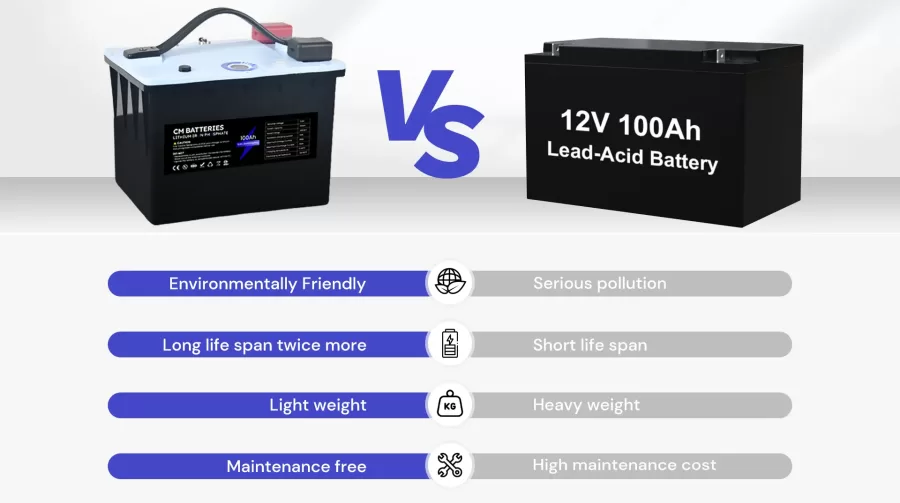While lead-acid batteries may seem to be the most cost-effective battery option on the market, these power sources have hidden costs that exist beyond the price paid at checkout. Lead-acid batteries come with unexpected efficiency, labor, and environmental costs that make them a more expensive and less attractive option than they might seem at first glance. Opting for lithium-ion batteries as an alternative, despite their higher cost, can ultimately save you time and money in the long run. You can click here for a detailed comparison between lead-acid batteries and lithium-ion batteries.

Here are some of the hidden costs of lead-acid batteries you might not be aware of.
Efficiency costs
Lead-acid batteries have a shorter life cycle than lithium-ion batteries, meaning you’ll need to go through many more lead-acid batteries than their longer-lasting counterparts. Buying numerous replacement batteries can cost you money in the long run. At CMB, as a distinguished custom lithium-ion battery manufacturer, we leverage our unparalleled battery knowledge and professional engineering team to deliver cutting-edge solutions tailored to your business needs.
Lead-acid batteries are also less energy-efficient than lithium-ion batteries. They can only be discharged to 30%-50%, while lithium-ion batteries can be discharged to 90%, meaning much less time is wasted swapping or charging batteries when lithium-ion batteries are at play.
Lead-acid batteries also have to warm up before charging, adding wasted time for your team that could be spent more productively. As if this wasn’t enough wasted charge time, lead-acid batteries also have an 8-hour cool-down period after charging before they can be used. Fast or partial charges can ruin your lead-acid battery, whereas lithium-ion batteries can be both fast-charged and partially charged.
Running your batteries inefficiently can lead to higher energy costs, unproductive time spent charging and swapping batteries, and damaged batteries that are charged incorrectly. On the other hand, using a lithium-ion battery will help you avoid all of these problems.
Labor costs
Lead-acid batteries require regular maintenance, such as adding water to the cells and checking acid levels. The runoff water from lead-acid batteries must then undergo a demineralization process, which can become costly for large companies. Without regular maintenance, the lifecycle of a lead-acid battery is cut approximately in half. Lead-acid batteries also require a designated maintenance room with special ventilation because of the toxic fumes they emit during charging, which is another added expense if you don’t already have one. Our tailored lithium-ion battery solutions alleviate maintenance burdens, allowing your team to focus on core operations.
Keeping up with this maintenance requires extra labor costs that can become expensive. From carrying around the much heavier lead-acid batteries to making sure they are properly cared for, you’ll find that choosing a low-effort option like a lithium-ion battery will save you labor costs in the long run, as they require almost no maintenance.
Environmental costs
Lead-acid batteries are made from toxic metals and chemicals that harm the environment after use, and since you need to use so many more of them to get the same charging capability as a lithium-ion battery, the damage done to the environment is compounded. The production of lead-acid batteries also produces 50% more CO2 emissions than the production of lithium-ion batteries.
While they may seem cheaper at the point of purchase, lead-acid batteries come with hidden efficiency, labor, and environmental costs that make them a more expensive option in the long run. Contact our team of experts today for a personalized consultation and discover the unparalleled benefits of lithium-ion technology tailored to your business needs. Experience the CMB advantage and unlock the true potential of your operations with cutting-edge lithium-ion battery solutions.


